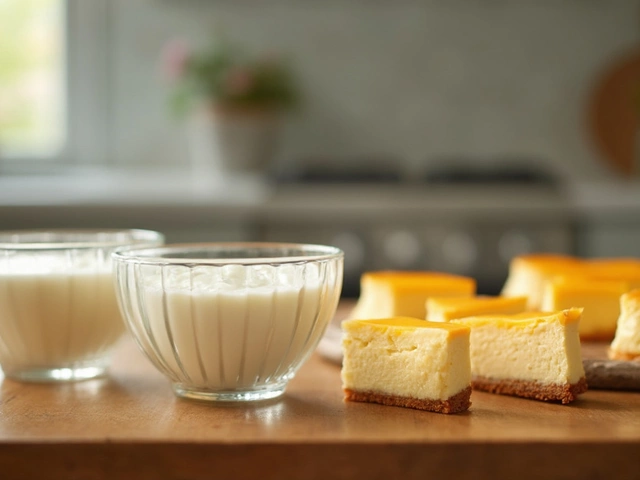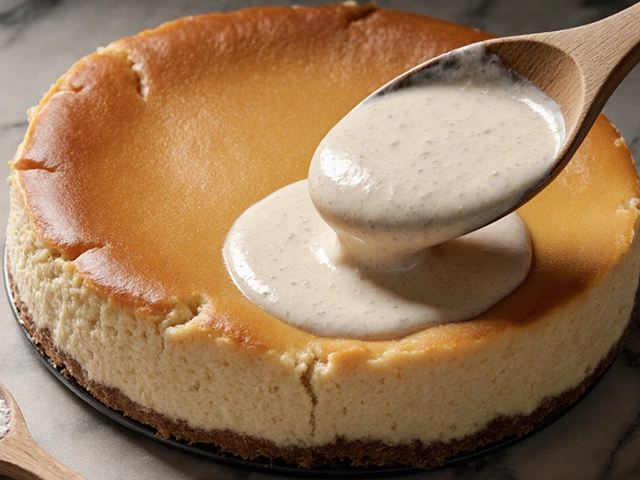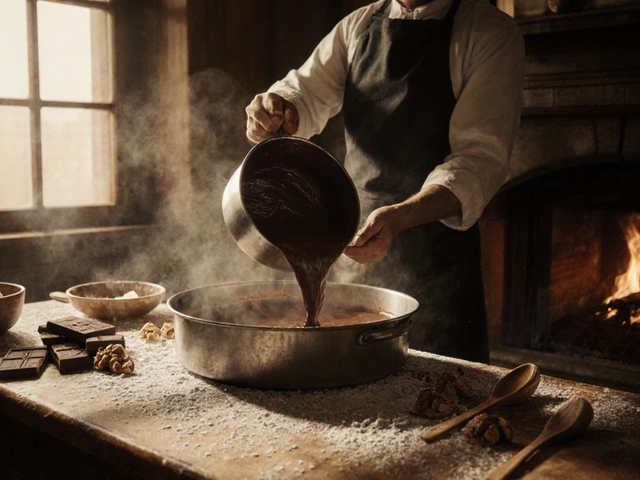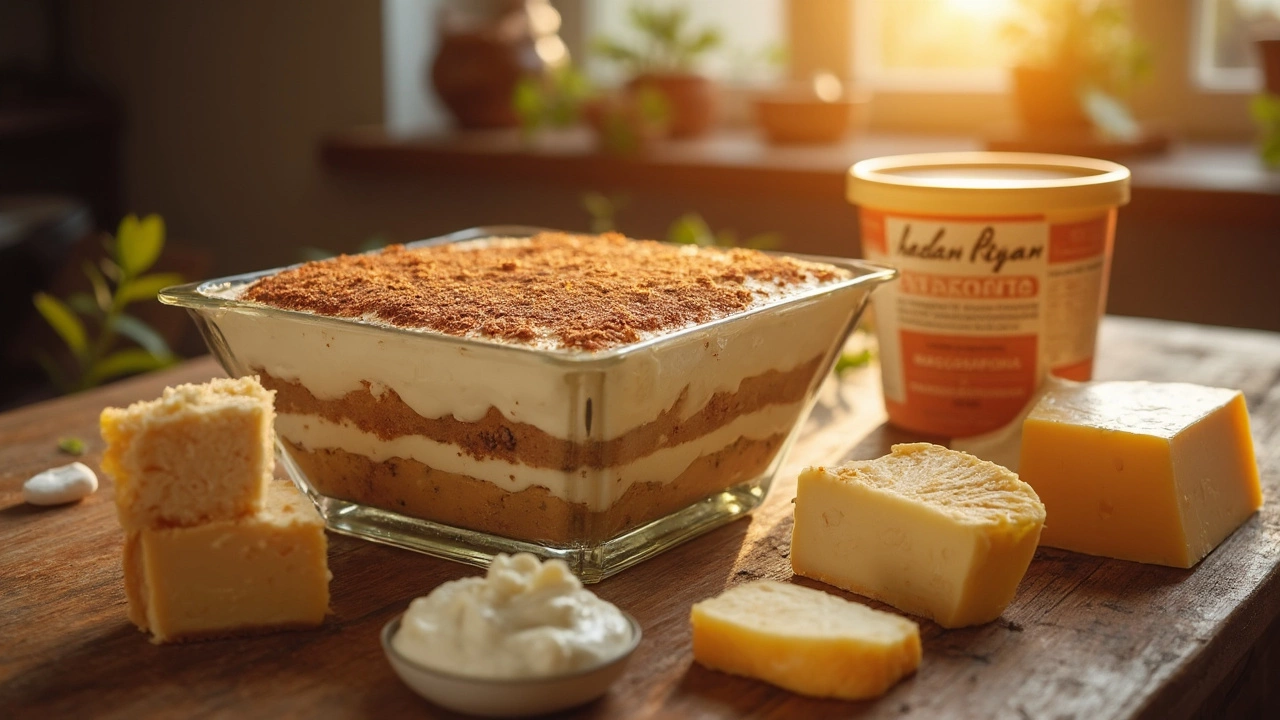
Ever tried freezing that leftover mascarpone after whipping up a tiramisu? Spoiler: it's not a good idea. If you've ever opened a thawed tub of mascarpone, you know it turns weirdly grainy and watery. Nobody wants gritty tiramisu cream. The magic of tiramisu comes from that silky, airy texture—freeze the wrong cheese and it falls flat fast.
There's a reason why Italian grandmas clutch their mascarpone close and skip the freezer altogether. It's a fresh cheese, super delicate, with a high fat content and loads of moisture. Once you freeze it, the water inside forms ice crystals, and when it thaws, you end up with a split and chunky mess instead of something smooth and spreadable.
- Why Cheese Texture Matters in Tiramisu
- Meet Mascarpone: The Essential Tiramisu Cheese
- What Freezing Does to Mascarpone
- Other Cheeses and How They Handle Freezing
- How to Store Cheese for Perfect Tiramisu
- Tips for the Creamiest Homemade Tiramisu
Why Cheese Texture Matters in Tiramisu
If you've ever bitten into a piece of tiramisu and loved that creamy, melt-in-your-mouth bite, texture is why. The cheese is really what makes or breaks this dessert. If the cheese is off, even a great batch of espresso-soaked ladyfingers can't save your tiramisu.
Mascarpone, the cheese everyone uses for tiramisu, is famous for its smooth, almost buttery feel. When it's fresh, it blends perfectly with whipped eggs and sugar, making the cream light and stable. As soon as the texture turns grainy or watery—usually because someone tried freezing it—the whole dessert just falls apart. The cream can't hold its structure, which means your tiramisu becomes runny or lumpy instead of being silky and dreamy.
Most shop-bought tiramisu that tastes "off" probably had mascarpone that was mishandled at some point. Texture may not sound like a big deal, but in a dessert where creamy layers are everything, it matters more than you think. If you want a tiramisu that actually wows people, this means sticking with mascarpone that's fresh and never frozen.
- Good cheese texture makes cream that stays fluffy and easy to spread.
- Bad texture leads to cream that separates, making the dessert messy and unstable.
- Using the wrong type of cheese or mishandled mascarpone will change the whole mouthfeel—it's never just about flavor.
If there’s one thing to remember when making tiramisu at home, it’s this: texture matters just as much as taste, especially when it comes to the tiramisu cheese. Skipping shortcuts with cheese means your dessert comes out like it should—creamy and unforgettable.
Meet Mascarpone: The Essential Tiramisu Cheese
Let’s cut to the chase—every good tiramisu starts with mascarpone. This isn’t just any cream cheese. Mascarpone is an Italian cheese that’s ultra-rich, made from just two things: heavy cream and a splash of acid (usually lemon juice or vinegar). The result? A cheese that’s velvety, mild, and way smoother than regular cream cheese or ricotta.
Italians have been making mascarpone for centuries in the Lombardy region. What really sets it apart isn’t its flavor, but its texture. Its fat content sits between 60% and 75%, which gives tiramisu that signature creamy, cloud-like feel. The fat matters—a lot. It makes mascarpone spoonable, easy to blend, and perfect for carrying the coffee and cocoa flavors in tiramisu.
Check out some quick facts about mascarpone compared to other common cheeses:
| Cheese | Fat Content (%) | Texture | Perfect for Tiramisu? |
|---|---|---|---|
| Mascarpone | 60-75 | Ultra-creamy, smooth | Yes |
| Cream Cheese | 33-36 | Dense, tangy | No |
| Ricotta | 10-25 | Grainy, crumbly | No |
| Whipped Cream | 30-36 | Light, airy | No (but good mixed in!) |
If you’re aiming for that dreamy tiramisu texture, skip the shortcuts. No other cheese blends quite like mascarpone—substitutes end up too gritty or too firm. When you shop, go for the freshest mascarpone you can find. If you can, pick brands that use no stabilizers or additives; those just mess with the creamy consistency you want for the best homemade tiramisu. And if you want to make it yourself, all you need is cream, lemon juice, a thermometer, and a little patience.
What Freezing Does to Mascarpone
Freezing mascarpone is asking for trouble, especially if you care about your tiramisu. This cheese isn’t built to survive low temps. It’s super high in fat, usually about 40% or more, and is packed with moisture. When you freeze it, water inside turns into ice. Those ice crystals shred the smooth structure mascarpone is famous for.
When you thaw frozen mascarpone, it doesn’t bounce back. The water separates from the fat. You’ll open the container and see watery liquid pooling, with chunky blobs floating around. It looks odd and it tastes off. Try mixing it back together? Not going to happen. You just get a lumpy mess that’ll ruin your dessert.
Want the details? Here’s what really changes after freezing:
- The texture goes from creamy to curdled. No blender or whisk can bring it back.
- Flavor gets duller. Sometimes, a slightly sour aftertaste creeps in after thawing.
- The structure loses its strength. Your tiramisu layers will slump or ooze.
Quick look: the table shows you what to expect before and after freezing mascarpone:
| Mascarpone State | Texture | Flavor | Best Use |
|---|---|---|---|
| Fresh | Smooth, creamy | Delicate, slightly sweet | tiramisu, spreads, dips |
| Frozen/Thawed | Grainy, watery | Weak, sometimes sour | Use in cooked dishes only (never tiramisu) |
If you want proper tiramisu, skip freezing your mascarpone. It's not worth compromising that melt-in-your-mouth texture for a little extra shelf life.
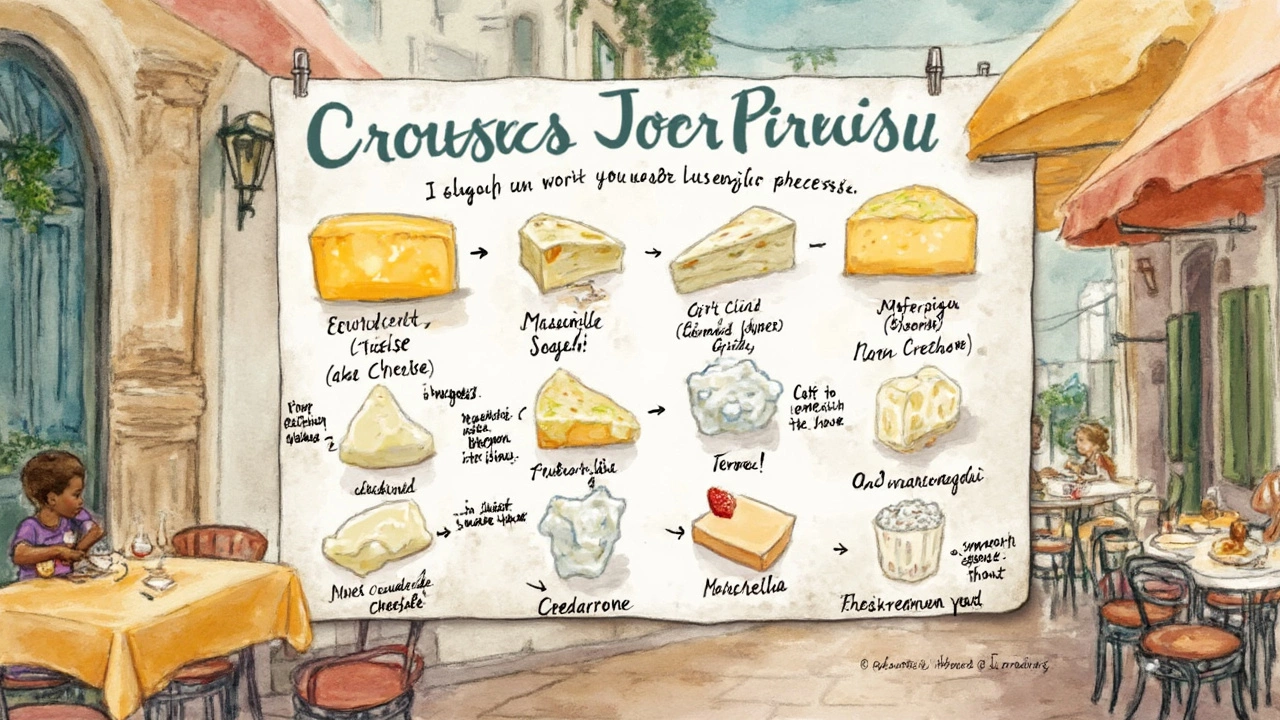
Other Cheeses and How They Handle Freezing
Not all cheeses put up a fight in the freezer like mascarpone does. Some actually handle it pretty well, while others turn into rubber or start leaking all over your fridge once you thaw them. If you’re making tiramisu, knowing which cheese can survive the deep freeze saves your dessert—and your mood.
Here’s a breakdown of how some popular cheeses deal with freezing:
| Cheese | Freezing Effect | Recommended Use After Freezing |
|---|---|---|
| Mascarpone | Separates, gets grainy and watery | Not recommended for tiramisu or spreads |
| Cream Cheese | Can become crumbly, not smooth | Works in some baked recipes, not in tiramisu |
| Ricotta | Water separates, becomes watery | Okay for cooked dishes, not good raw |
| Mozzarella (Low Moisture) | Freezes well for melting, texture survives | Great for pizza and casseroles |
| Parmesan | Handles freezing well | Still good for grating and cooking |
So, if you’re thinking about freezing cheeses for tiramisu, plain and simple: skip mascarpone, cream cheese, and ricotta unless you want a lumpy mess. Hard cheeses like Parmesan are a totally different story—they can chill in the freezer for months without breaking a sweat, but you wouldn’t use Parmesan in tiramisu anyway (unless you like weird dessert). As a rule, the fresher and softer the cheese, the worse it handles the cold—especially for no-bake desserts.
One more tip—if you somehow have leftover mascarpone or cream cheese and really don’t want to toss it, use it in baked dishes after freezing. Just don’t expect the dreamy smoothness you need in tiramisu.
How to Store Cheese for Perfect Tiramisu
Want that tiramisu to hit just right? You’ve got to treat your cheese the right way from the start. Seriously, storing mascarpone is where most tiramisu attempts go wrong. Here’s how to keep it fresh, creamy, and ready for show-stopping desserts.
The thing is, mascarpone loves the cold but hates extreme temperatures. Never freeze it—the texture gets ruined fast. Instead:
- Always keep mascarpone in its original container, tightly sealed, and stash it in the coldest part of your fridge (usually the back, on the bottom shelf).
- Don’t leave it out at room temp for longer than 20–30 minutes. It spoils fast.
- If you open a tub and don’t use it all at once, cover any leftovers with plastic wrap pressed right on the surface before sealing the lid back on.
- Use up opened mascarpone within 3–5 days for the creamiest results.
When it comes to cream cheese (not the real deal for tiramisu fans, but it pops up in a pinch), the rules are pretty much the same. Keep it cold, sealed, and don’t freeze unless you’re really desperate. Ricotta is even trickier—store it with the same care as mascarpone, and use it fast. Here’s a quick cheat sheet for storing soft cheeses:
| Cheese | Best Storage Temp | Fridge Life (Opened) | Freezer? (Yes/No) |
|---|---|---|---|
| Mascarpone | 1–4°C (34–39°F) | 3–5 days | No |
| Cream Cheese | 1–4°C (34–39°F) | 7–10 days | Yes (texture changes) |
| Ricotta | 1–4°C (34–39°F) | 3–5 days | No |
One last pro tip: always check the best-by date on your mascarpone before you buy, especially when tiramisu is your plan. That ensures you’re starting off with the best texture—freshness really does make or break this dessert.
Tips for the Creamiest Homemade Tiramisu
If you want your tiramisu to taste just like the one from that tiny café in Rome, you’ve got to nail the creamy part. The secret weapon? Fresh, unfrozen mascarpone—straight from the fridge, never the freezer. When you start with mascarpone that’s never been frozen, you keep that signature smooth, rich texture that sets tiramisu apart.
Here are a few fast rules to guarantee a creamy dessert every time:
- Use high-fat mascarpone: Look for mascarpone with around 40% fat. It holds up better and tastes luxuriously rich.
- Let mascarpone reach room temperature: Cold cheese can go lumpy when mixed. Set it out for 20–30 minutes before blending with eggs or cream.
- Don’t overmix: Whisk just until combined and smooth. Over-beating breaks down the fat and turns everything runny.
- Keep your coffee strong but not too wet: Quickly dip ladyfingers—don’t soak them, or the whole dessert turns mushy instead of light.
- Chill at least 4 hours before serving: This gives all the flavors time to blend and lets the cream set right.
Want a bit of proof about what works? Check out this quick table on popular tiramisu tips and how they impact your dessert:
| Tip | Why It Matters |
|---|---|
| Use fresh mascarpone | Prevents grainy texture and watery cream |
| Mix ingredients at room temp | Blends smoother, traps more air |
| Let dessert chill for hours | Firm, sliceable layers and blended flavor |
| Quick dip for ladyfingers | Keeps them from breaking apart |
And a bonus: if you want to swap things up, don’t reach for cream cheese or ricotta—they get grainy fast, especially if frozen. Stick to the mascarpone, take your time with the layering, and you’ll have a tiramisu worth bragging about.

